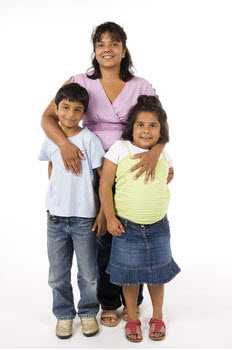SEED Frequently Asked Questions
Q: What are the six CADDRE centers? Where exactly is the study taking place?

A: The six CADDRE centers are:
- Colorado CADDRE: JFK Partners and University of Colorado School of Medicine, Anschutz Medical Campus. The study area is the Denver metropolitan area—Arapahoe, Adams, Boulder, Broomfield, Denver, Douglas, and Jefferson counties.
- Georgia CADDRE: the National Center on Birth Defects and Developmental Disabilities, Centers for Disease Control and Prevention. The study area is made up of metropolitan Atlanta—Clayton, Cobb, DeKalb, Fulton, and Gwinnett counties.
- Maryland CADDRE: Johns Hopkins University and Kennedy Krieger Institute. The study area includes Anne Arundel, Baltimore, Carroll, Cecil, Harford, and Howard, Montgomery, and Prince George’s counties and Baltimore City.
- Missouri CADDRE: Washington University. The study takes place in 22 counties along the interstate 70 corridor from St. Louis to Kansas City: Boone, Callaway, Cass, Clay, Cole, Cooper, Franklin, Gasconade, Howard, Jackson, Jefferson, Johnson, Lafayette, Moniteau, Montgomery, Osage, Pettis, Saline, St. Louis, St. Louis City, St. Charles, and Warren.
- North Carolina CADDRE: University of North Carolina at Chapel Hill. The study takes place in Alamance, Chatham, Davidson, Durham, Forsyth, Guilford, Johnston, Orange, Randolph, and Wake counties.
- Wisconsin CADDRE: The Board of Regents of the University of Wisconsin System. The study takes place in a 20-county area that encompasses the 10 counties of southeastern Wisconsin: Dane, Green, Jefferson, Kenosha, Milwaukee, Ozaukee, Racine, Rock, Walworth and Waukesha counties, and an extension of 10 counties in south central Wisconsin: Adams, Chippewa, Clark, Columbia, Eau Claire, Juneau, Marathon, Portage, Sauk and Wood counties.
- California CADDRE: Kaiser Permanente Division of Research and the California Department of Health Services. The study takes place in Alameda and Santa Clara counties. (Former SEED 1 and 2 site)
- Pennsylvania CADDRE: University of Pennsylvania School of Nursing and The Children’s Hospital of Pennsylvania. The study area is made up of Bucks, Chester, Delaware, Montgomery, and Philadelphia counties. (Former SEED 1 and 2 site)

Q: Why are we looking at children in only six states?
A: The funding for the study is enough to support only six sites around the country.
Q: How were the CADDRE centers chosen?
A: Five SEED research sites were picked through an open competitive review process in 2016. The CDC in Atlanta, Georgia serves as the sixth site.
Q: What is being studied and why?
A: SEED is looking at three main areas:
- Physical and behavioral characteristics of children with ASDs, children with other developmental disabilities, and children without a developmental delay or disability:
ASDs are complex disorders. We want to learn more about why people with ASD are the way they are—how they behave, grow, think, and interact with the world around them. We also want to know the same things about children with other developmental disabilities and those with typical development.
- Health conditions among children with and without ASDs:
We are interested in learning more about the health conditions and disorders that might affect children with and without ASDs. Some smaller studies have shown that certain medical conditions seem to be found more often among children with ASDs and their families. SEED provides an opportunity to compare health conditions and health-related issues such as sleeping and eating patterns in children with ASDs, in children with other developmental disabilities, and in children without a developmental delay or disability.
- Factors associated with a child’s risk for developing ASDs:
We hope that SEED will give us a better idea which of the many possible risk factors that we will be evaluating seem to be associated with or related to ASDs. The risk factors may be related to genes, health conditions, experiences of the mother during pregnancy, and the health and development of the child during infancy and the first few years of life.
Q: Why are we looking at other developmental disabilities?
A: By comparing children with ASDs and children with other developmental disabilities, we will have a better sense of whether the physical traits, health conditions, and risk factors we find among children with autism are unique to autism or if they also are found among children with other developmental problems.
Q: What are the other developmental disabilities being studied?
A: We will be studying intellectual disability, developmental delay, a range of other behavioral and developmental problems of early childhood.
Q: How many children will be enrolled in SEED?
A: So far, over 7,100 children and their parents are enrolled across all the study sites. We plan to enroll an additional 2,000 children and parents before SEED is complete.
Q: How old are the children who will take part in SEED?
A: Children 2–5 years of age will be asked to take part in SEED.
Q: Why are we looking only at children 2–5 years of age?
A: The study is limited to this age group because we want to study the early development of children with and without ASDs. Also, children in this age group will be more likely to be near the beginning of treatment if they are already participating in developmental intervention programs. Finally, we are focusing on children who were born in and still reside in certain areas. We are interested in learning about a range of health-related events during the mother’s pregnancy and the child’s early life. Thus, we selected a young age range so that families would be less likely to have moved away from the study area, and the children’s health information would be easier to find.

Q: What will parents and children in the study be asked to do?
A: Parents or caregivers will be asked to answer questions about their child’s development and their family’s medical history. Children will have a brief physical examination and developmental testing by study clinicians. Each parent and child will be asked to give small samples of saliva and blood. Finally, we will ask to look at the mother’s and the child’s medical records.
Q: How are data being gathered? Are they being gathered in the same way at each site?
A: All SEED sites are using a common study protocol. This means they are doing the same things at each site so that, at the end of the study, the data from all six sites can be combined into a single, large database that can be analyzed.
Q: How did Georgia SEED pick children to ask to take part in this study?
A: GA SEED is working with partners in the community who serve children with developmental problems. Through these partners, we will be sending out letters to families to invite them to participate.
We are also working with the Georgia Department of Public Health to recruit families with children born from 2008 through 2011 and living in the five-county metropolitan Atlanta area (Clayton, Cobb, DeKalb, Fulton, and Gwinnett counties).
Q: Is SEED a national study? Will the children studied represent all U.S. children?
A: SEED is a multisite study taking place in six states. CDC does not have funding to do a bigger study that would give a complete picture of the health of children nationwide. However, because this study is being done in six states across the country, we hope it will pretty closely represent children’s health in the rest of the country.
To increase the likelihood that the children studied represent all children, we will select children with ASDs and other developmental problems from a number of clinics and schools in the study areas. By using lots of different clinics and schools (and not just one or two), the children chosen to take part are likely to be representative of all children with these types of developmental problems and not just children who might be seen at a single clinic or school. The third group of study children (those without developmental disabilities) will be picked at random from all of the children born in each community during the same time period. This will ensure that they, too, are representative of all children in the study area, most of whom do not have developmental problems.
Q: When the study is done, will we know the causes of autism?
A: It is too soon to know that. The goal of the study is to give us a better idea of which risk factors seem to be associated with ASDs. These factors might be related to genes, the environment, or both.
Q: Will this study find a way to prevent or cure autism?
A: At this time, we can’t answer this question. But, we hope that the findings from SEED will lead to future studies specifically designed to test treatments among children with autism.
Q: Whom can I contact to learn more about Georgia SEED?
A:
Georgia SEED
Charmaine McKenzie
National Center on Birth Defects and Developmental Disabilities
Atlanta, GA
Telephone: 404-498-0058
Email: gaseed@cdc.gov
Q: I live in one of the other states with a CADDRE center. Whom can I contact to learn more about the study?

A:
Colorado SEED
Kristina Hightshoe
University of Colorado at Denver
And JFK Partners
Denver, CO
Telephone: (303) 724-7638
Email: colorado.seed@ucdenver.edu
Website: www.coloradoseed.org
Maryland SEED
Jamie Dahm
Johns Hopkins University
Kennedy Krieger Institute
Baltimore, MD
Telephone: 877-868-8014
Email: cadde@jhsph.edu
Website: www.jhsph.edu/wkc/seed
Missouri SEED
Lauren Eck
Washington University School of Medicine
Department of Child Psychiatry
St. Louis, MO
Telephone: 314-286-1584
Email: leck@wustl.edu
Website: www.sdslab.wustl.edu/active-studies/SEED3/
North Carolina SEED
Chyrise Bradley
University of North Carolina at Chapel Hill
Chapel Hill, NC
Telephone: toll free 866.633.8003
Website: www.NCSEED.org
Wisconsin SEED
Leslie Seltzer
Waisman Center
University of Wisconsin – Madison
Madison, WI
Telephone: 608-263-0271
Website: www.waisman.wisc.edu/ucedd/programs-Wisconsin-SEED.htm
For more information about this study, contact Georgia SEED via email at georgiaseed@cdc.gov or by phone at 404-498-0058.
DISCLAMER:
Your participation is voluntary. There are no penalties if you choose not to participate in all parts of the study. We value your participation; families are encouraged to complete all steps they are comfortable with. It is important for all invited families to take part so we can learn more about differences in child development. Your participation will help us look
E-mail Your Friends
"Children with autism spectrum disorder are not being diagnosed as early as they could be. Learn the signs of autism and get help if you’re concerned."
Share on Facebook

“Many children with autism spectrum disorder (ASD) are not being identified as early as they could be. Early identification is the most powerful tool we have right now to make a difference in the lives of children with ASD.”
Share on Twitter
“Too many children w/ autism are not being identified as early as they could be. Earlier is better. #ActEarly”
- Page last reviewed: July 19, 2017
- Page last updated: July 20, 2017
- Content source:


 ShareCompartir
ShareCompartir